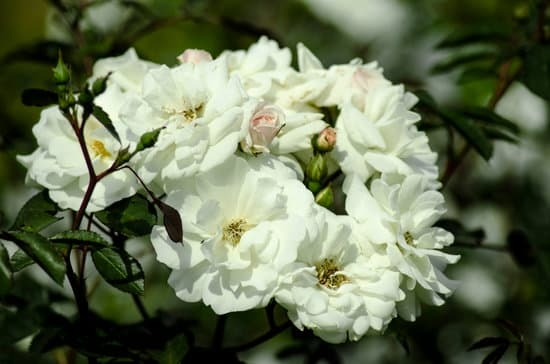Gardening ideas for home in India offer a wonderful opportunity to connect with nature and enhance the beauty of living spaces. In a country as diverse as India, where climates vary from region to region, exploring different gardening techniques becomes both challenging and exciting. From traditional Indian plants to container gardening, there are numerous creative ways to bring the joy of gardening into your home.
One of the key aspects to consider when delving into gardening in India is understanding the impact of its diverse climates. With a range of climates spanning from tropical to subtropical, it’s important to choose plants that thrive in specific regions. Additionally, space optimization plays a crucial role, especially in small Indian homes where innovative techniques like vertical gardening can maximize greenery in limited areas.
For those looking to add a touch of tradition to their gardens, incorporating indigenous plants can bring an authentic charm to Indian homes. Moreover, sustainable practices and eco-friendly gardening ideas are becoming increasingly popular in the quest for greener living spaces. By embracing community gardening initiatives, individuals can also contribute towards promoting green spaces within Indian neighborhoods.
Climate Considerations
India is known for its diverse climates, ranging from tropical to arid to temperate. These climate variations play a crucial role in determining the types of plants that thrive in different regions of the country. In northern India, where winters can be harsh and summers scorching, hardy plants like roses, marigolds, and jasmine are commonly found. In contrast, the southern regions with their more moderate climate see lush vegetation such as coconut palms, banana trees, and hibiscus flowers.
When it comes to gardening ideas for home in India, it is essential to consider the specific climate of your region. For example, residents of coastal areas may have to contend with high humidity levels and salty air, which can impact plant health.
In such cases, opting for salt-tolerant plants like bougainvillea or succulents can ensure a thriving garden. Additionally, understanding the monsoon patterns in your area can help you plan your gardening activities accordingly to make the most of the rainy season.
Embracing native plants is another way to work with India’s diverse climates when planning your home garden. Indigenous plants like mango trees, neem trees, tulsi (holy basil), and curry leaves not only adapt well to local conditions but also attract beneficial insects and wildlife. By incorporating traditional Indian plants into your garden design, you not only celebrate your cultural heritage but also create a sustainable ecosystem that requires less maintenance and resources.
| Climate Considerations | Impacts on Gardening |
|---|---|
| Diverse Climates in India | Varied plant adaptability based on region |
| Regional Specifics | Adapting gardening practices based on local climate conditions |
Space Optimization
When it comes to gardening in small Indian homes, space optimization is key. With limited yard space or balconies, finding creative ways to utilize every inch for plants can make a big difference. One popular trend for maximizing space is by implementing vertical gardening techniques. This involves using structures like trellises, hanging planters, or wall-mounted containers to grow plants upwards instead of outwards. Vertical gardening not only saves space but also adds visual interest to your home.
Another effective way to optimize space for gardening in small Indian homes is by incorporating multipurpose furniture that doubles as planters. For example, choosing a coffee table with a built-in planter section or a bookshelf with integrated plant pots can help merge functionality with aesthetics. Additionally, utilizing hanging baskets or tiered shelving units can make use of vertical space and create a lush green corner even in the smallest of spaces.
In addition to traditional soil-based gardens, hydroponic systems are gaining popularity as a space-saving gardening solution in India. These soil-less systems allow you to grow plants indoors without the need for large plots of land. By using water-based nutrient solutions and artificial lighting, you can cultivate herbs, vegetables, or flowers year-round regardless of outdoor space limitations. Implementing these innovative gardening ideas for home in India can transform even the tiniest spaces into thriving green oases.
Traditional Indian Plants
India boasts a rich biodiversity that is reflected in its wide variety of indigenous plants. These native species have adapted to the diverse climatic conditions across the country, making them ideal choices for home gardens. By incorporating these traditional Indian plants into your garden, you not only showcase the beauty of the region but also support local ecosystems. Here are some popular indigenous plants that thrive in different parts of India:
- Tulsi (Holy Basil): Considered sacred in Hindu culture, Tulsi is known for its medicinal properties and is believed to bring positivity to the home. This aromatic herb thrives in warm climates and is easy to grow in pots or garden beds.
- Neem: Neem trees are revered for their multiple benefits, from their pest-repelling properties to their medicinal uses. The neem plant can withstand harsh conditions and is perfect for providing shade and greenery in Indian gardens.
- Jasmine: Known for its fragrant blooms, jasmine is a popular choice for adding beauty and aroma to Indian homes. With proper care and regular pruning, jasmine plants can flourish in various climates across India.
Incorporating these traditional Indian plants into your garden not only adds a touch of cultural significance but also contributes to preserving the natural heritage of the country. Whether you have a small balcony or a spacious backyard, there are options available for every type of gardener looking to embrace local flora.
- Marigold: Commonly used in religious ceremonies and decorations, marigolds are versatile flowering plants that thrive in India’s warm climate. Their vibrant hues add color to the garden while attracting pollinators like bees and butterflies.
- Aloe Vera: Known for its numerous health benefits, aloe vera is an easy-to-care-for succulent that thrives in arid regions. This low-maintenance plant is perfect for beginners and can be grown both indoors and outdoors.
- Curry Leaf Tree: Essential in Indian cooking, curry leaves are best when fresh from your own tree. These aromatic leaves require ample sunlight and well-drained soil to flourish, making them a great addition to any herb garden.
By cultivating traditional Indian plants in your home garden, you create a connection with nature while enjoying the beauty and utility of these indigenous species. Whether you choose herbs for culinary use or flowering plants for aesthetic appeal, incorporating local flora adds a unique charm to your gardening experience while supporting biodiversity conservation efforts across India. Remember to consider your region’s specific climate requirements when selecting traditional Indian plants for your home garden.
Vertical Gardening
As urbanization continues to expand in India, many city dwellers find themselves living in small apartments with limited outdoor space. However, this should not deter gardening enthusiasts from pursuing their passion.
Vertical gardening is the perfect solution for those looking to cultivate a green oasis in their homes without compromising on space. By utilizing vertical spaces such as walls, balconies, or even hanging planters, individuals can create stunning and functional gardens that not only beautify their living spaces but also promote environmental sustainability.
One of the key advantages of vertical gardening is its ability to maximize the use of limited space. By going vertical, gardeners can grow a wide variety of plants including herbs, flowers, vegetables, and even small fruit trees in a minimal footprint.
This method also allows for better air circulation and sunlight exposure, which are essential factors for healthy plant growth. In addition to being space-efficient, vertical gardens can also serve as natural insulation for buildings by reducing heat absorption and promoting cooler indoor temperatures during hot Indian summers.
When embarking on a vertical gardening project in an Indian home, it is important to consider the specific needs of the plants chosen for cultivation. Some popular choices for vertical gardens in India include climbers like money plants (Epipremnum aureum), ivy (Hedera helix), and jasmine (Jasminum officinale).
These plants not only add a touch of greenery but also provide aromatic blooms that enhance the ambiance of any living space. Furthermore, incorporating indigenous species such as neem (Azadirachta indica) or tulsi (Ocimum tenuiflorum) can attract beneficial insects while repelling pests naturally – a sustainable practice that aligns with eco-friendly gardening ideas for home in India.
Seasonal Gardening
Monsoon Season
The monsoon season in India typically ranges from June to September, bringing heavy rainfall and high humidity levels. During this time, gardeners can plant water-loving vegetables like okra, pumpkins, and leafy greens such as spinach and fenugreek. Adequate drainage is essential to prevent waterlogging during this period. It is also a good time to start composting organic waste to enrich the soil for future planting seasons.
Winter Season
Winter in India varies depending on the region but generally falls between November and February. This season is ideal for growing cold-tolerant crops such as carrots, radishes, peas, and cauliflower. Container gardening becomes popular during this time as it allows gardeners to move plants indoors during frosty nights.
Mulching can help protect plants from extreme cold and conserve moisture in the soil. Additionally, it is a great time to focus on maintenance tasks like pruning and cleaning up the garden for the upcoming spring season.
Summer Season
The summer season in India spans from March to May and brings intense heat and dry conditions. It is best suited for heat-loving vegetables like tomatoes, cucumbers, peppers, and eggplants. Providing sufficient shade during peak hours of sunlight can prevent plants from wilting or scorching.
Watering practices need to be adjusted to account for evaporation rates, ensuring that plants receive an adequate amount of moisture. Implementing sustainable practices such as rainwater harvesting can help conserve water resources during this period.
By aligning gardening activities with India’s distinct seasons, enthusiasts can maximize their yields while enjoying a thriving green space at home. Planning ahead based on seasonal variations enables gardeners to adapt their practices accordingly and maintain a sustainable garden throughout the year. With careful attention to seasonal nuances and proper care techniques, anyone can create a flourishing garden oasis right at home using these
Sustainable Practices
Water Conservation
One of the most critical aspects of sustainable gardening in India is managing water efficiently. With the country facing water scarcity issues, it is essential to incorporate practices that conserve this precious resource. Using techniques like drip irrigation, mulching, and collecting rainwater can significantly reduce water wastage in your garden. Additionally, choosing drought-resistant plants can also help minimize water usage while still maintaining a lush and vibrant garden.
Composting and Recycling
Another eco-friendly gardening idea for homes in India is composting and recycling organic waste. Instead of throwing away kitchen scraps or yard waste, consider starting a compost bin. Compost not only enriches the soil but also reduces the need for chemical fertilizers. Additionally, recycling materials like plastic bottles or old containers for planters can help reduce waste while adding a creative touch to your garden.
Native Plants and Biodiversity
Incorporating native plants into your garden not only supports local ecosystems but also reduces the need for excessive maintenance. Native plants are well-adapted to Indian climates, requiring less water and minimal care compared to exotic species. By promoting biodiversity through planting a variety of indigenous flora, you can create a more resilient and sustainable garden ecosystem. Consider researching local species that attract pollinators like bees and butterflies to enhance the ecological value of your green space.
Community Gardening
Gardening has always held a special place in Indian homes, serving as not just a hobby but also a tradition that connects people to nature. As we explore the diverse climates of India and understand how it impacts gardening, one thing becomes clear – there are endless possibilities for creating beautiful green spaces right at home.
From the northern plains to the coastal regions, each part of India offers unique opportunities for cultivating a variety of plants and flowers. By incorporating traditional Indian plants into our gardens, we can create a truly authentic and vibrant outdoor space that reflects our rich cultural heritage.
For those living in small Indian homes, space optimization is key when it comes to gardening. Embracing container gardening and vertical gardening techniques allows individuals to make the most of limited spaces, turning balconies, terraces, or even windowsills into lush green sanctuaries.
These methods not only maximize space but also add a touch of creativity and innovation to the overall design. By utilizing eco-friendly practices such as composting and water conservation, we can ensure that our gardens thrive sustainably while reducing our environmental impact.
Engaging in community gardening initiatives provides an opportunity for like-minded individuals to come together and promote green spaces in Indian neighborhoods. Through shared knowledge, resources, and efforts, communities can transform unused patches of land into flourishing gardens that benefit everyone.
These initiatives not only enhance the aesthetic appeal of neighborhoods but also foster a sense of unity and environmental consciousness among residents. By collectively embracing gardening ideas for home in India, we can create a greener and more sustainable future for generations to come.
Frequently Asked Questions
How Can I Start Gardening at Home in India?
Gardening at home in India can be a fulfilling and rewarding experience. To start, consider the climate in your region to choose suitable plants. Begin by preparing the soil, selecting seeds or plants, and ensuring proper sunlight and water for them.
What Are the Styles of Gardening in India?
In India, there are various styles of gardening that you can explore based on preferences and space available. Traditional Indian gardening styles like Mughal, Persian, or Charbagh gardens offer structured layouts with symmetrical patterns. Additionally, contemporary styles like terrace gardening or vertical gardening are gaining popularity due to limited space in urban areas.
Which Plant Is Best for Home Garden?
When choosing plants for your home garden in India, consider the climate of your region to ensure they thrive. Popular choices include herbs like mint, basil, or coriander that require minimal maintenance.
Flowering plants like marigold or hibiscus add color and beauty to the garden while being easy to grow. Additionally, vegetables like tomatoes, chilies, or okra can be cultivated for a fresh supply of produce.

Welcome to my gardening blog! I am passionate about plants and enjoy sharing my knowledge and experiences with others. In this blog, I will write about everything related to gardening, from tips on how to get started to updates on my own garden projects.





